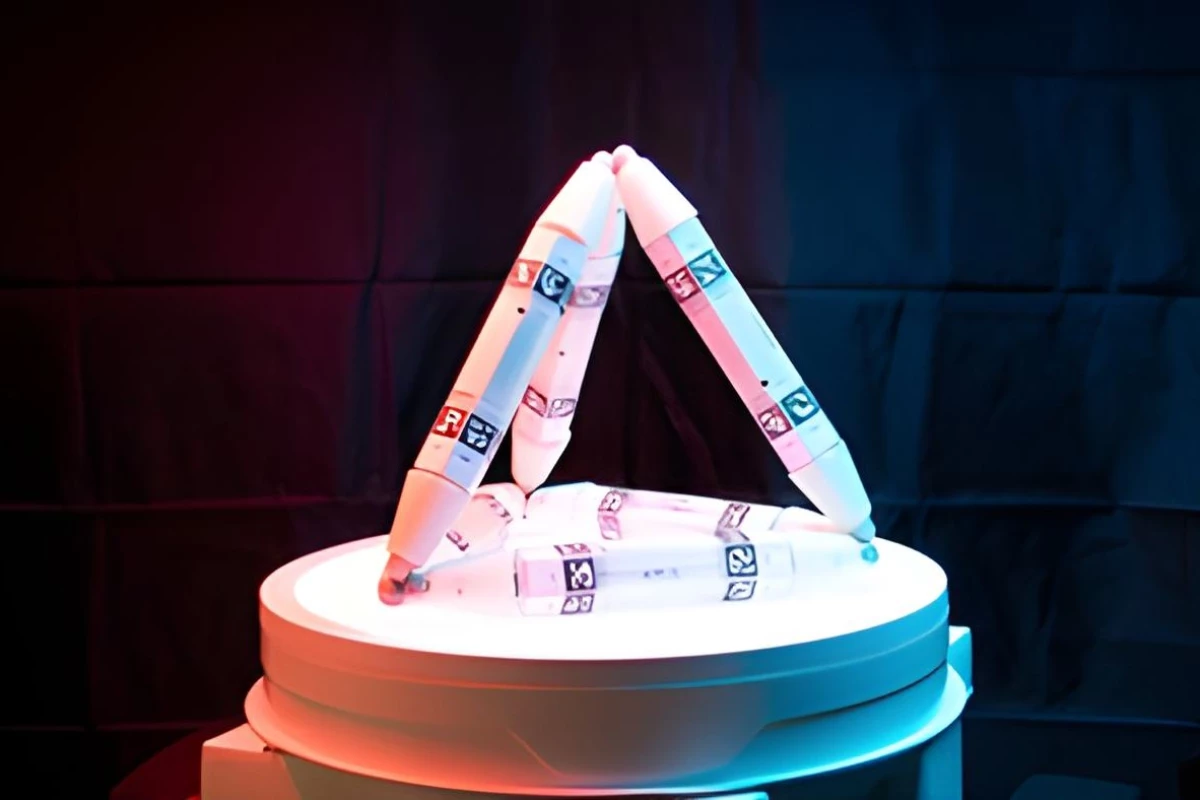In a move that inches us just a little closer to the singularity, engineers have developed robots that can grow, self-repair, and morph by absorbing parts from other robots. They can also help their brethren do the same.
At the moment, the robots in question are called Truss Link, which are basically bar-shaped modules with magnets at each end that resemble Geomag building toys. The modules can expand and contract, roll around, and link up with each other by linking up their magnets. So we're not talking about sophisticated robo-soldier assembly lines just yet. Still, the proof-of-concept work by researchers out of Columbia University is another step toward making robots more self-sufficient than they currently are.
"True autonomy means robots must not only think for themselves but also physically sustain themselves," says Philippe Martin Wyder, lead author of a study detailing the work published in Science Advances. "Just as biological life absorbs and integrates resources, these robots grow, adapt, and repair using materials from their environment or from other robots."
As you can see in the following video, the researchers showed that these stick robots were able to morph from two-dimensional to three-dimensional through cooperative action. At one point, the robot assembly picks up another module, which it uses as a kind of walking stick. This, say the researchers, allowed it to increase its downhill speed by over 66%.
Perhaps the most "uh-oh humans might be in trouble" moment in the video comes when one set of robots is seen helping another change shape. There's also a clip in which one group of robots jettisons a module with a dead battery before picking up a working one.
"Robot minds have moved forward by leaps and bounds in the past decade through machine learning, but robot bodies are still monolithic, unadaptive, and unrecyclable,” says study co-author Hod Lipson. “Biological bodies, in contrast, are all about adaptation - lifeforms can grow, heal, and adapt. In large part, this ability stems from the modular nature of biology that can use and reuse modules (amino acids) from other lifeforms. Ultimately, we’ll have to get robots to do the same - to learn to use and reuse parts from other robots.”
In addition to creating the bots, the researchers also created their own laws of robot metabolism, which echoes Asimov's Three Laws of Robotics just a little.
"First," they write, "robot metabolism cannot rely on active physical support from any external system to accomplish its growth; the robot must grow using only its own abilities. The only external assistance allowed is that which comes from other robots made of the same components. Second, the only external provision to robot metabolism is energy and material in the form of robots or robot parts. No new types of external components can be provided."
The team says the modular morphing robots could one day find use in disaster recovery efforts or space exploration.
We've certainly seen shape-shifting robots before including the GOAT bot, the ATMO bot, a Virigina Tech bot that morphs thanks to metal that shifts between liquid and solid, and dozens of others. And even though there are plans for robots to begin assisting at a robot-assembly plant, those droids will seemingly be doing "simple, repetitive intralogistics and manufacturing tasks." However, the Columbia bots, though simple, might be the first time we've seen a set of automatons that can build themselves, repair themselves, and help others do the same, although they are reminiscent of MIT's M-Blocks from a few years back. If any of this gives you robot revolution willies, Lipson says to chill.
“The image of self-reproducing robots conjures some bad sci-fi scenarios," he says. "But the reality is that as we hand off more and more of our lives to robots - from driverless cars to automated manufacturing, and even defense and space exploration. Who is going to take care of these robots? We can’t rely on humans to maintain these machines. Robots must ultimately learn to take care of themselves.”
Sure, what's to worry about?
Source: Columbia Engineering





